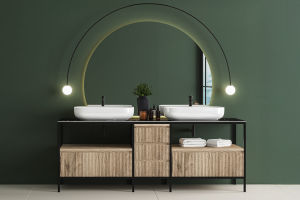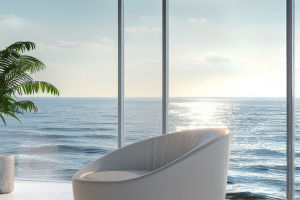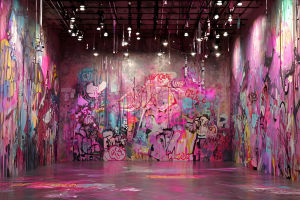You've probably watched a movie where a single shot made your heart race—or your eyes well up. Maybe it was a wide aerial of a lonely road, or a tight close-up of a trembling hand. What you felt wasn't accidental. It was carefully pre-planned—likely weeks before the camera rolled.
The tool? A storyboard. Quietly sketched in pre-production meetings and rarely shown to audiences, storyboards are the visual blueprints of a film. They bridge the gap between script and screen. But here's what many people miss: they're not just technical—they're emotional architecture. And yes, they are art.
What Is a Storyboard?
A storyboard is a sequence of drawings that maps out each camera shot in a film, animation, or even commercial. But it's not just about framing. A strong storyboard communicates:
1. Emotion through camera angle
2. Movement through directional arrows and timing
3. Tone through composition and shadow
Think of it like a graphic sequence that shows not only what happens—but how it should feel.
The Hidden Storyteller Behind the Scenes
Let's talk about "visual storytelling"—the silent language of images. Storyboard artists are the first people to shape this. They ask:
• Should the viewer feel close or distant from the character?
• Is this a moment of chaos or calm?
• Should the shot be symmetrical to suggest control—or tilted to show tension?
These choices affect how we feel, long before the actors even step on set.
Case Study: The Storyboard That Made a Blockbuster
In Jurassic Park (1993), Steven Spielberg worked closely with storyboard artist David Lowery to choreograph the now-iconic T-Rex attack. The key visual decisions—starting in the kids' perspective from the car, cutting to the vibrating water cup, then slowly revealing the dinosaur—were all storyboarded before anything was shot.
What made it work?
1. The use of vertical frames to emphasize size and threat
2. Cutting rhythm designed to build anticipation, not just action
3. Close-ups inserted between wide shots to humanize the fear
The scene still works decades later because it's not just "cool"—it's visually crafted to feel like suspense.
From Pencil to Edit: The Workflow
Here's what happens when a storyboard becomes central to a production:
1. Script Breakdown: The director and storyboard artist identify key beats.
2. Shot Design: Every frame includes camera angle, movement, and framing.
3. Animatic Creation: Storyboards are turned into timed slides with temp sound—so editors and composers can work before filming starts.
4. On-Set Guidance: Cinematographers and set designers refer to the boards to maintain visual consistency.
Directors like Wes Anderson, Christopher Nolan, and Denis Villeneuve are known for their precise pre-visual planning, often drawing or editing the storyboards themselves.
Not Just for Big Budgets
Storyboarding isn't only for Hollywood. Independent filmmakers and animation students use the same process to sharpen their vision, save time, and communicate clearly. Even a low-budget short film benefits from storyboards:
• Reduces reshoots by clarifying intent before filming
• Improves team coordination, especially with multiple departments
• Allows creative experimentation with pacing and visuals before committing
Why It's a Legitimate Art Form
Some argue that storyboards are "just planning tools." But let's reframe that. Architecture drawings are plans, too—but we still call them art. Good storyboards require:
• Gesture drawing to capture movement
• Cinematographic instinct to select the right frame
• Rhythmic layout to pace a story across multiple panels
• Character insight to shape acting choices through framing
Many storyboard artists come from comic, illustration, or fine art backgrounds. Their work may never be shown in a gallery—but it shapes millions of moviegoers' experiences.
Common Techniques That Shape What You Feel
Here are five subtle storyboard techniques that directly impact how you feel during a movie:
1. The Rule of Thirds: Placing key objects slightly off-center to create tension or focus
2. Frame within a Frame: Using doors, mirrors, or windows to trap or isolate characters
3. Low Angles vs. High Angles: Making someone look powerful—or vulnerable
4. Movement Lines: Indicating action direction to control viewer attention
5. Negative Space: Leaving "empty" parts in the frame to suggest loneliness or scale
Once you learn to notice these, you'll see them everywhere—from Marvel movies to indie dramas.
From Static to Cinematic: The Emotional Leap
Ultimately, a storyboard is more than a sketch. It's a decision. It asks: how should this moment feel, and how should we see it? The emotional weight of a scene—the sadness in a farewell, the tension before a reveal, the triumph of a final shot—is all embedded before the camera rolls. And when done right, you don't notice it as a viewer. You feel it.
Next time you watch a film, pause a few times and ask: Why was this shot framed this way? What emotion is it trying to deliver without words?
You might start to see movies differently—not just as stories, but as masterfully drawn ideas, frame by frame. And behind that, always, is an artist with a pencil, quietly designing what you'll feel next.


